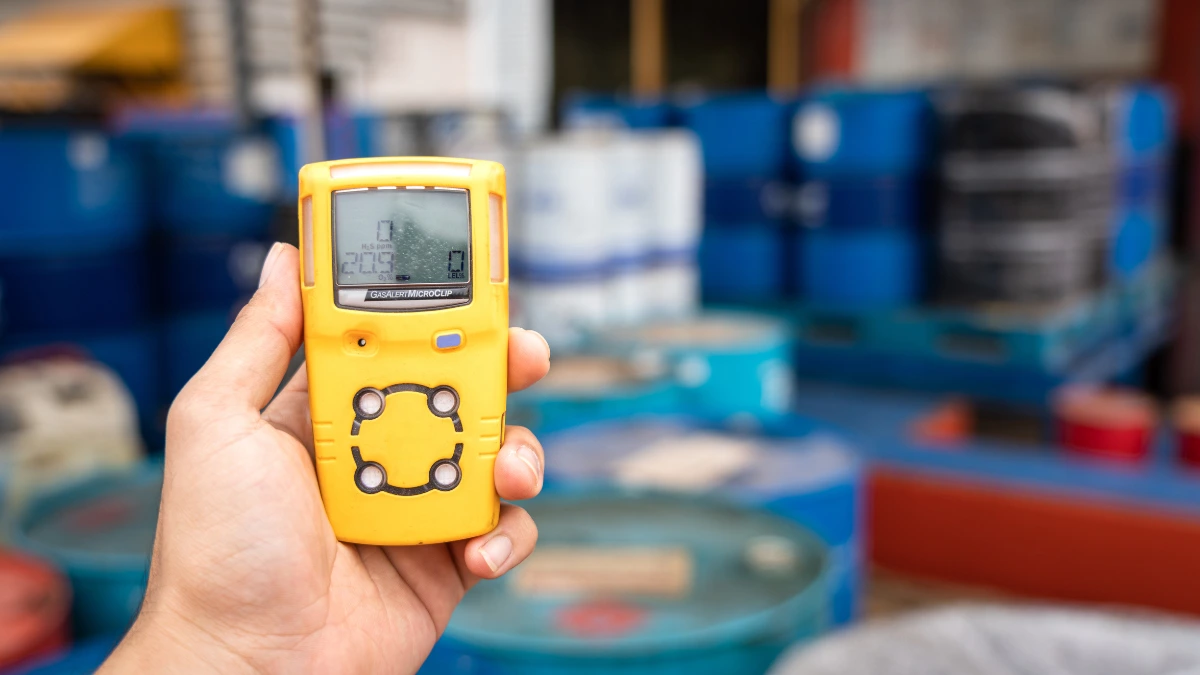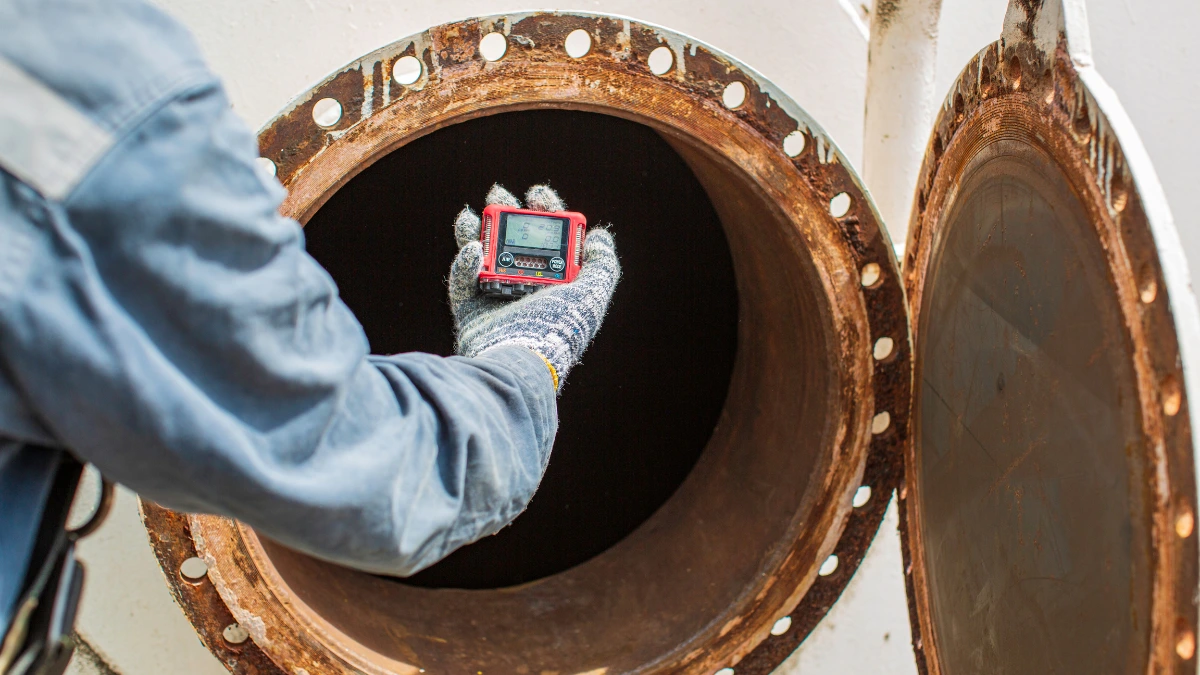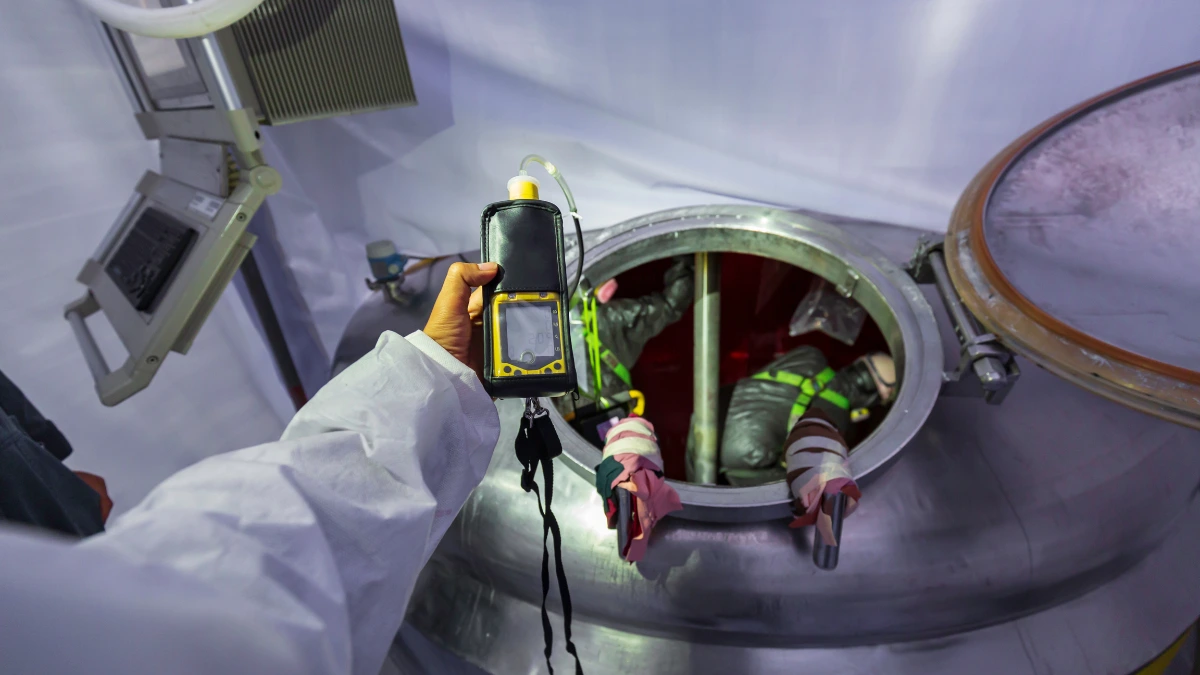A single gas detector is one type of gas detection system that provides the ability to detect the presence of hazardous gases or gases that pose a potential risk in an environment due to leaks with easy operation.
The use of a single gas detector includes monitoring toxic gases and oxygen level monitoring. Moreover, the benefits include improving workplace safety, preventing accidents, and meeting workplace safety standards.
This article will give you information about a single gas detector, including its use, the benefits, and the features they have.
What is a Single Gas Detector?

A single gas detector is a type of detector designed to detect only one specific type of gas. Examples include detectors for hydrogen sulfide (H2S), carbon monoxide (CO), or oxygen (O2).
This device is ideal for use in areas with potential single gas hazards to monitor specific gases. In detecting gas leaks, this detector is capable of monitoring oxygen levels in confined spaces.
With this device, users will receive warnings to take quick preventive action when the monitored gas exceeds safe limits.
When to Use a Single Gas Detector?

With so many single gas detectors available, each with its specific use, when is the right time to use a single gas detector? In the following situations, single gas detectors are commonly used:
- Monitoring toxic gases: Often used in chemical plants that use hydrogen sulfide.
- Oxygen level monitoring: Used in enclosed spaces or environments with low oxygen levels (e.g., confined spaces or tanks).
- Areas with fire hazards: Used in areas with flammable gases, such as oil refineries or coal mines.
The situations above require the use of a single gas detector to detect potential hazardous leaks and ensure oxygen levels remain safe.
The Benefits of a Single Gas Detector

Using a single gas detector provides many benefits, especially for improving workplace safety, preventing accidents, and meeting workplace safety standards. Here are some of the main benefits:
1. Improving workplace safety
One of the benefits of a single gas detector is its ability to improve workplace safety. By detecting hazardous gases, it helps workers avoid poisoning, fires, or explosions caused by exposure to hazardous gases.
2. Providing early warnings
Another benefit of a single gas detector is its ability to provide early warnings. When gas levels exceed the set threshold, the detector will issue an alert signal via visual, audio, or vibration, enabling workers to take preventive actions.
3. Preventing accidents
Not only does it enhance workplace safety, but a single gas detector can also prevent accidents from occurring earlier. With the early warning provided, workers can take preventive measures against the risk of exposure to hazardous gases, thereby preventing workplace accidents.
4. Improving operational efficiency
Another benefit of single gas detectors is improved operational efficiency. Early detection allows companies to take immediate action, thereby reducing downtime caused by gas exposure or evacuation.
5. Meeting workplace safety standards
A single gas detector is not merely a detection tool; it has become an essential component for meeting workplace safety standards. Workplace safety regulations require the installation of gas monitoring devices in areas at risk of exposure to hazardous gases.
The Features of a Single Gas Detector
Here are the key features of the single gas detector that help in easy operation and make it efficient in various working conditions:
- Ergonomic design
- Multi-mode alarm
- Accurate sensor
- Easy calibration
- Wireless (with Bluetooth connection)
- Long battery life
Conclusion
Those are the definitions, uses, benefits, and features of a single gas detector that you need to know.
This detector tool is specifically designed for monitoring toxic gases and oxygen level monitoring.
This type of gas detection improves workplace safety, preventing accidents, and meeting workplace safety standards.
With this device, workers can easily detect toxic gases using its various modern features, thereby improving work operations.